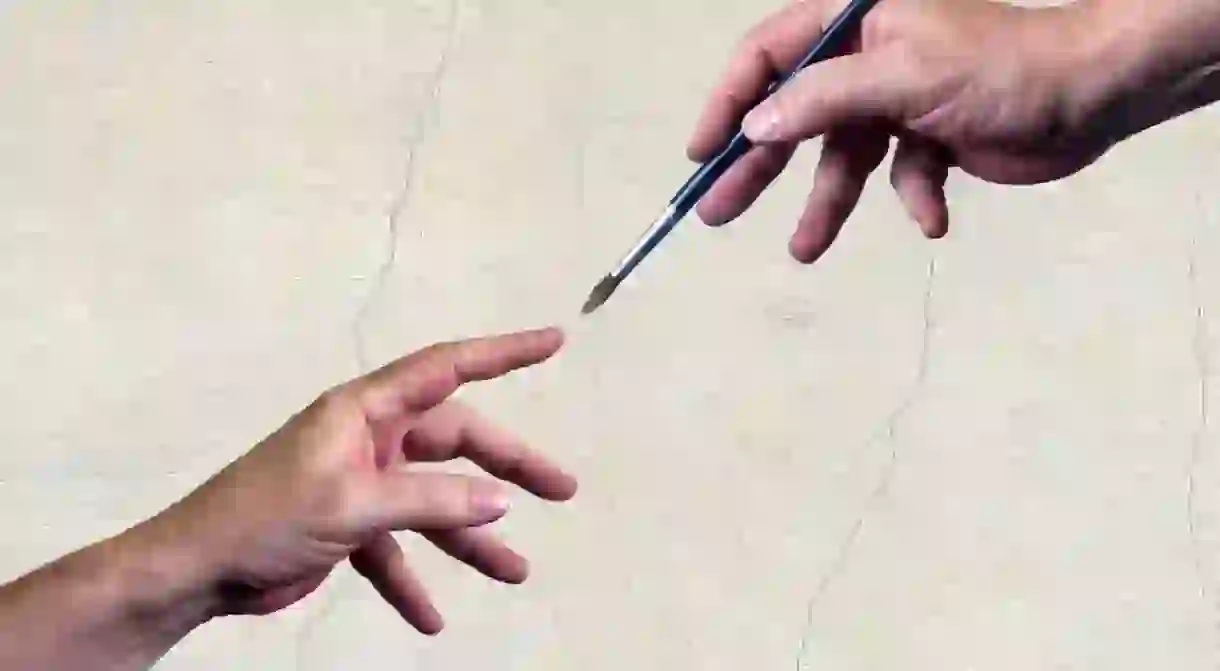This Is What Actually Happens If You Touch a Priceless Painting in a Museum

We get it, a good work of art will beckon to you. From across the room it catches your eye, so you gravitate toward the canvas for a closer look. You’re moved by the richness of its color and the depth of its masterly brushstrokes until you’re practically entranced by the image, and… you’re tracing its detail with your bare finger. Now what?
There’s but one cardinal rule for every museum-goer: don’t touch the art. Perhaps this seems restrictive—don’t museums fundamentally exist to foster art appreciation among the masses? How can we fully experience a painting if we may only observe it from afar?

Rachel Ropeik, the Manager of Public Engagement at the Solomon R. Guggenheim Museum in New York City explained to Culture Trip that “the urge to touch often comes from fascination and interest, which we don’t want to discourage, so we help the Gallery Guides think about a touching situation as a possible opening for conversation. For example: ‘Excuse me, please don’t touch that. Isn’t that piece tempting? What about it fascinates you?’”
The Guggenheim’s security team consists of both traditional guards and Gallery Guides, described by a museum representative as “a hybrid role of guard and museum educator that has been emulated by institutions around the world.” While the presence of “traditional” security guards serves as the most obvious reminder to keep your distance (and haven’t we all heard a guard execute their foremost task loudly and proudly at some point in time?), the Gallery Guides, according to Ropeik, employ “their grounding in education to find creative ways to remind visitors not to touch artwork.”
While the Guggenheim may calmly coax tactile visitors away from their prized collection, don’t mistake this unflustered strategy for the green light to smear your fingers across those priceless brushstrokes. Museums around the world, which repeatedly label their galleries with this stern reminder and station guards at every turn to enforce gallery rules, have a solid reason for this necessary command.
“Our hands contain harmful oils that react to the surface of sculpture, furniture, and paintings,” explains the Art Institute Chicago on their website. “Those oils corrode the surfaces of objects and lessen the life expectancy of the art. If we all touched the art that we love, there would be little left for our children and grandchildren to enjoy. Please be responsible and thoughtful: don’t touch the art, and don’t climb up on pedestals or platforms. These exist to protect the objects.”
In theory, such clear reasoning—made publicly available on most museum websites—should be enough to deter visitors from such a blunder. But unfortunately, it’s not uncommon for children and adults to succumb to those strong sensory instincts.
But what actually happens if you touch a priceless painting in a museum? In most cases, you’ll simply be reminded not to do so. However, repeat offenders risk banishment for endangering the art.
So, you have two options: you could wait to see what happens if you touch an artwork. Or you could remain aware and respectful of the items on view. We strongly encourage the latter.
Please note that many museums offer touch tours for visitors who are blind or partially-sighted. If you are visually impaired, you may be able to obtain a braille or large-text gallery map, as well as touch/verbal description tours with trained guides.













